The invasive species causing concern across Ireland
- Published
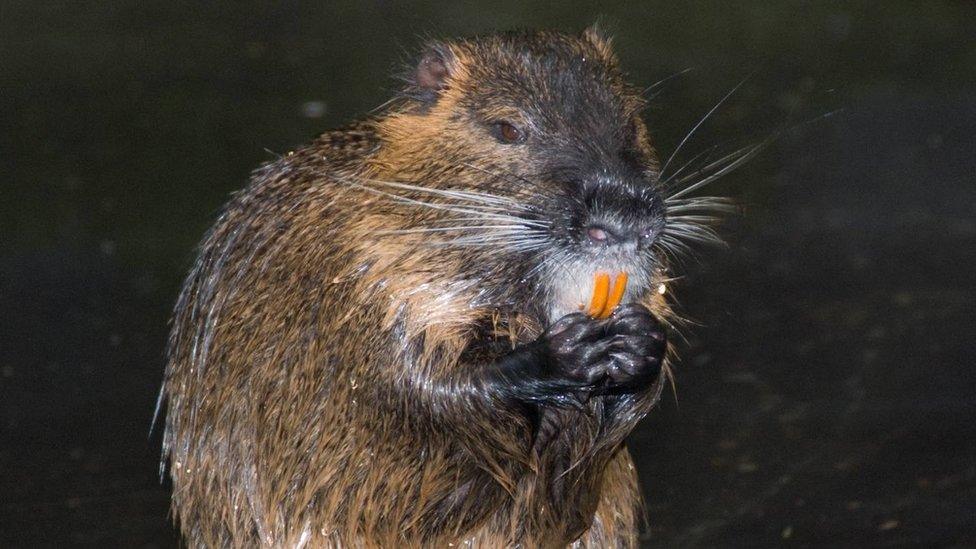
Ten coypus were removed from the Curraheen area of County Cork in 2016
How did huge South American rodents come to be in Ireland?
In 2016, sightings began in the waterways of County Cork of what appeared to be a metre-long rat with large orange teeth.
The coypu is a rodent native to South America, but has since spread to North America and parts of Europe.
It is also one of several invasive species in Ireland seen as a threat to the local habitat.
Although there may be some excitement to see such exotic species in the Irish countryside, coypu are viewed as pests.
The animals feed on aquatic vegetation, including rare and threatened species, undermine the banks of rivers through burrowing and can also feed on agricultural crops.
In 2016, Ireland's National Biodiversity Centre received a report of a suspected muskrat and a photograph of two animals which turned out to be coypus.
Within a month, 10 of the animals had been captured from the Curraheen area just outside Cork city.
Colette O'Flynn, from the National Biodiversity Data Centre, said a year or two before the Cork sightings there had been an agricultural show in the area from which a coypu had gone missing, but which had not been reported.
"Either it was a pregnant female or more than one was released, we don't know," she said.
"Following this, there was a one-month intensive trapping period and the general public was alerted and urged to report sightings."
Coypus were seen in other parts of the city and other parts of the county, while two animals were removed from counties Tipperary and Limerick.
The search continued and suspected sightings were followed up on, but no further animals were found.
'We remain very vigilant'
A suspected sighting in Dublin Canal in 2019 is now believed to have been a pair of otters.
"Perhaps they [coypus] kind of died naturally themselves, although it seems there might have been at least one more at large after that," Ms O'Flynn said
"Or there might have been predation by dogs or something else we're just not aware of, but there's been no evidence of their presence in the area since.
"But we remain very vigilant to any suspected sighting."
A number of other unusual animals have been confirmed in the Irish countryside, north and south of the border.
They include raccoons, Siberian chipmunks and even wallabies.
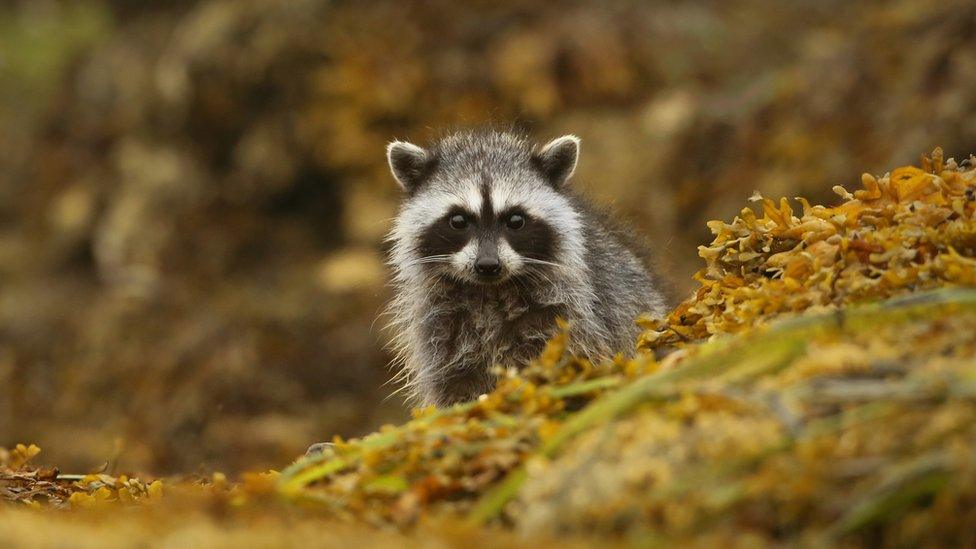
Raccoons have been found in the wild but are not thought to be breeding in Ireland
"There is a population of wallabies on Lambay Island off the east coast - they've been there decades," Ms O'Flynn said.
"They are a reproducing population, but they're confined to there with it being an island.
"We have recently had an unverified report of somebody introducing them to a private island down off of Waterford, but they're not known to occur anywhere else in Ireland."
She added: "Raccoons are not known to be reproducing in the wild, in general it's individual animals and they've either been taken into captivity or they've been killed.
"In Ireland, the temperature, our climate, the habitat are all there, they're all suitable for raccoons to reproduce.
"So they could do that, it could sustain a wild population and they are at risk of being invasive here and having an impact."
In Northern Ireland, Muntjac deer, which are native to south Asia, have been released into the Ards Peninsula, with the Northern Ireland Environment Agency saying it is "currently commissioning work regarding these".
It added that there have been "isolated instances" of species such as raccoons and wild boar being released or escaping in Northern Ireland, "but they have been quickly recaptured".
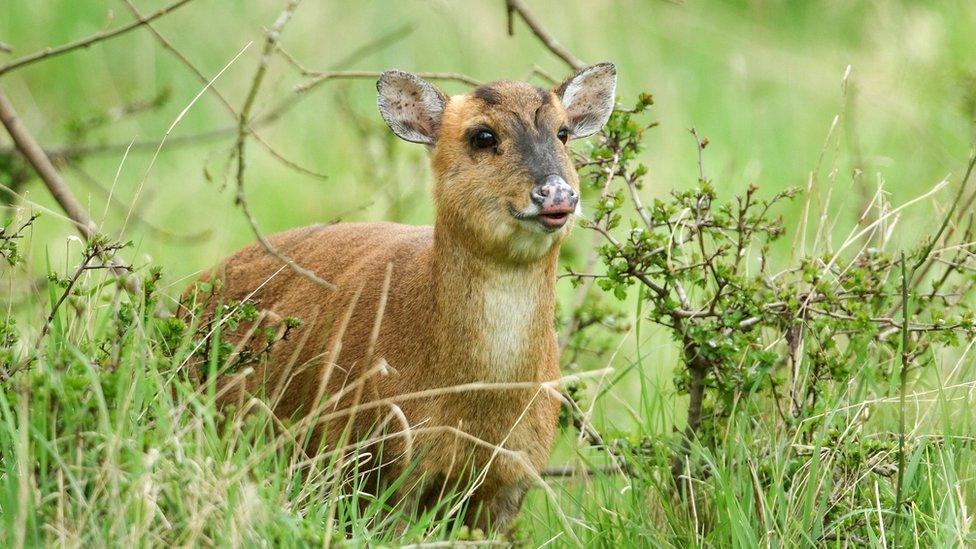
Muntjac deer, native to south Asia, are present in the Ards Peninsula in Northern Ireland
While these animals are present, but not established in Ireland, one that is now widespread in both jurisdictions is the American mink.
"American mink have been present and breeding in Northern Ireland since the 1960s, having escaped from fur farms," a spokesperson for the NI Environment Agency's invasive species team said.
"The healthy otter population in NI is thought to have helped keep their numbers down, but supplementary trapping is used in areas where their numbers have a detrimental impact on local biodiversity, for example, on nature reserves with vulnerable species."
In the Republic, there are now thought to be tens of thousands of the "voracious predators", according to Ms O'Flynn.
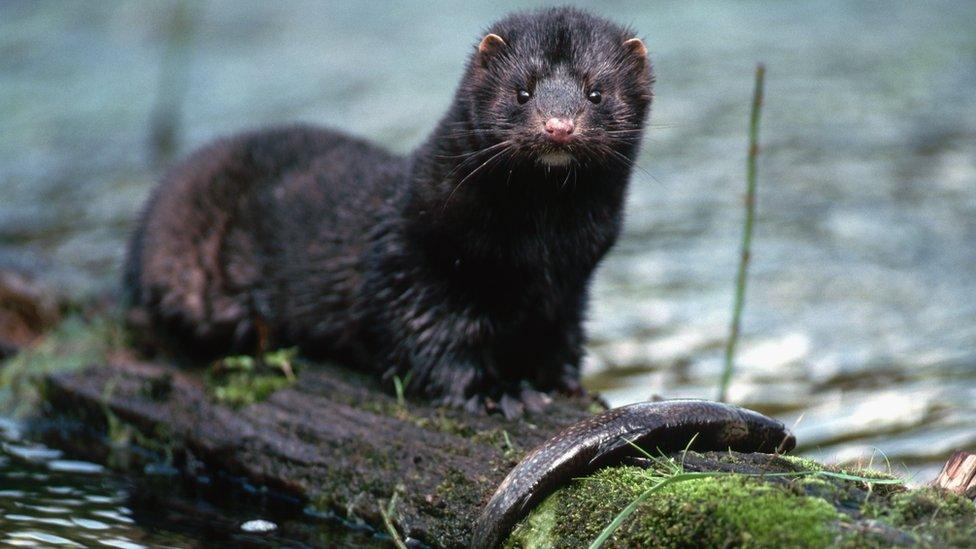
American mink are now widespread in both Northern Ireland and the Republic
While there have been efforts over the years to control the mink, Ms O'Flynn said that it is now so common "you'll never be able to eradicate it from Ireland - they reproduce very regularly as well".
Warning
Ms O'Flynn warned people against releasing exotic pets into the wild.
"It's illegal to do so, it's an offence and the reason is for that animal it could cause untold harm to our native wildlife," she said.
"The wildlife won't have evolved to live with this species, it could be a predator to it, it could spread diseases, it could really cause problems for our native wildlife.
"But also the animal itself might not be able to have the optimum life in the wild either, particularly any animal that has been brought up in captivity or has been sold through the pet trade and may not have the skills to survive."
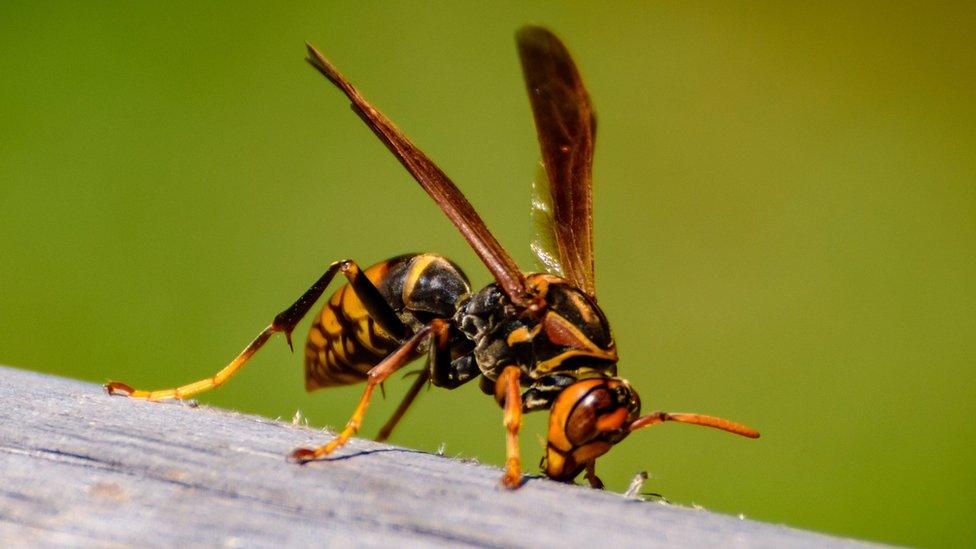
Ireland is on high alert for the Asian hornet
Another species that could have a huge impact if it becomes established on the island is the Asian hornet, a major threat to honeybees and other pollinators.
What is believed to have been a queen of the species, yet to have established a nest, was found in a residential garage in Dublin in the spring of last year, the first time one had been found in Ireland.
The discovery prompted "an awful lot of surveys" though no more have since been found, but Ms O'Flynn said Ireland is on "high alert".
"It's highly likely it got here in a vehicle or goods from Britain or mainland Europe," she said.
"They have been reproducing in Britain, they have been having nests there and the queens have been reproducing, but they have all been eradicated, so they're rapidly responding to any sightings in Britain.
"If they ever become widely established in Great Britain then that risk becomes much higher for the island of Ireland that these would naturally disperse over."
The Northern Ireland Environment Agency said it receives a few reports of Asian hornet sightings each year, "but to date, they have been similar-looking insect species".
The agency added that Northern Ireland, the Republic of Ireland and Great Britain regularly work together.
- Published12 January 2022
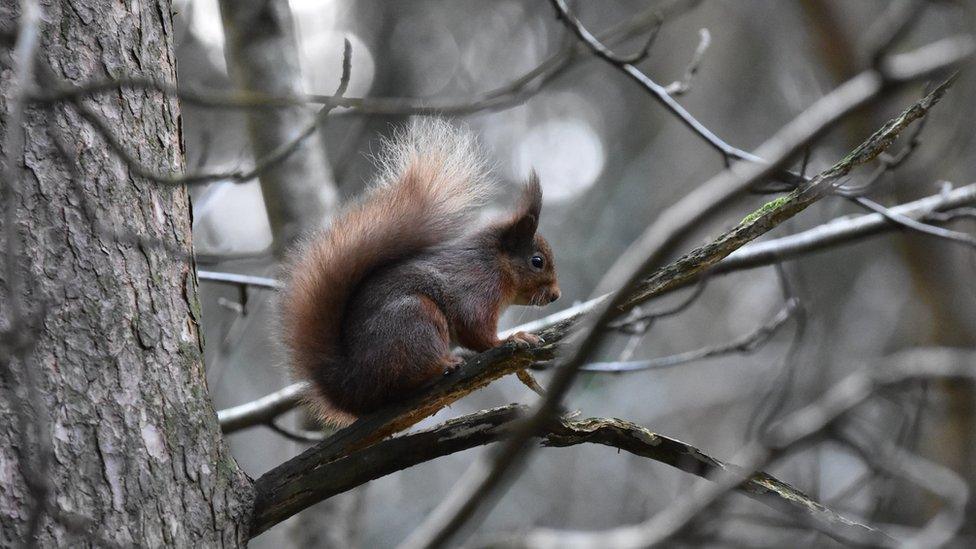
- Published23 June 2014
